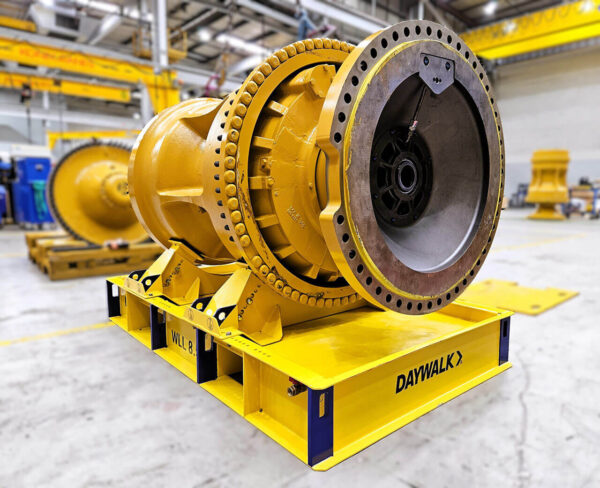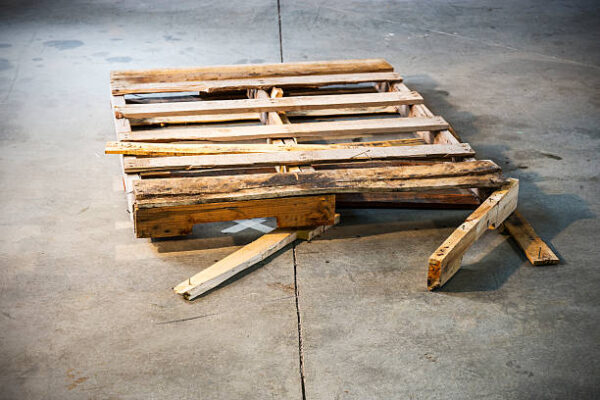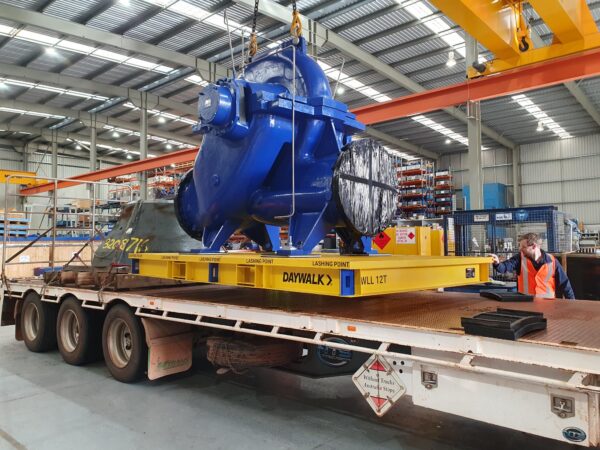Very few items in a person’s daily life haven’t spent at least a portion of its existence sitting on a pallet. Pallets are used every day for the transport and storage of almost everything that can be found on the market – from tables to books to clothes, pallets have done their part in getting these things from the manufacturer to the consumer.
The ubiquity of the pallet is attributed in part to the different types of pallets available. There are plastic pallets, steel pallets, and wooden pallets – each with their strengths that serve specific needs within the industrial and commercial sector. According to Peter Connors, president of a plastics manufacturing company, wooden and wood-byproduct pallets dominate the market at a whopping ninety-five per cent of pallets sold. The remaining five per cent is comprised of plastic and steel pallets.
Identifying the right type of pallet for one’s business can be daunting for those who aren’t aware of the benefits of each type. Does the business value durability over sanitation? What about the weight capacity of the pallet itself? What makes any of the three types different from each other, and what do these differences contribute to a business?
Wooden pallets comprise the majority of all pallets manufactured worldwide. They’re the least costly of the three types as well – a wooden pallet costs a fraction of the selling price of a steel pallet, for example. This is true from the production line to the market; wood is cheaper than plastic or steel fabrication, which makes wooden pallets a cost-effective option for manufacturers and warehouse operators.
Wooden pallets are also very easy to fix and replace. Just nail down a new plank if one has splintered, or replace the whole pallet with another – while the cost is not negligible, it’s much less costly compared to repairing steel or plastic.
However, wooden pallets are designed for light loads. Despite being ‘rated’, this is only for a first time use. While transporting lighter goods between sites and around site, most time the wooden pallet does the job very well. However, when it comes to durability in the weather, or safe transport of heavy gear.
Steel pallets are the sturdiest of pallets. Despite being more costly than plastic pallets and hardwood pallets, if you are storing or transporting heavy equipment, steel pallets should be your only consideration.
In comparison to a wooden pallet, steel pallets offer safety for heavy loads. How:
- The steel pallet’s heavy-duty welded construction means point loads and heavy equipment can’t damage or ‘pull up’ boards, look on a hardwood pallet.
- Welded grid mesh construction means that correct bolting and chocking can be undertaken to safely restrain equipment to the steel pallets. Compared to unrated strapping and low-quality wooden pallets, this is the Chain of Responsibility-safe option.
- The durability of the steel pallets allow for longevity, saving time and money long term, compared to the standard wooden pallet, which are more prone to breaking down when exposed to the elements. A 3-coat paint system on the steel pallet allows for durability.
Plastic pallets are the middle child of the pallet family. They’re more durable than wooden pallets but not as durable as metal ones. They’re also more costly compared to wood, but considerably more affordable than metal.
The distinct characteristic that plastic pallets have that stands out from the other two types is that plastic pallets are built as one continuous piece without moving parts. Unlike the wooden or metal pallet, which is assembled and put together, the plastic pallet is fabricated into a single seamless object. This makes the plastic pallet uniquely resistant to stress and impact, as there are no nails or joints that can come loose.
So why use the plastic pallet? At Omni-tuff, we typically recommend the plastic pallet for a number of applications include:
- Heavy-duty outdoor storage – when termite-ingress, high rainfall and harsh weather conditions are a challenge for storing equipment outdoors, the plastic is your best option, due to its heavy construction and natural UV-resistant properties.
- Medium-duty loads – the plastic pallet is rated up to 6T static and 2T dynamic loads, meaning it fits between the wooden and steel pallet. If you are looking to safely store and restrain heavy equipment around 2T – without the heavy duty construction needed for large equipment or safe transport, the plastic pallet is perfect.





